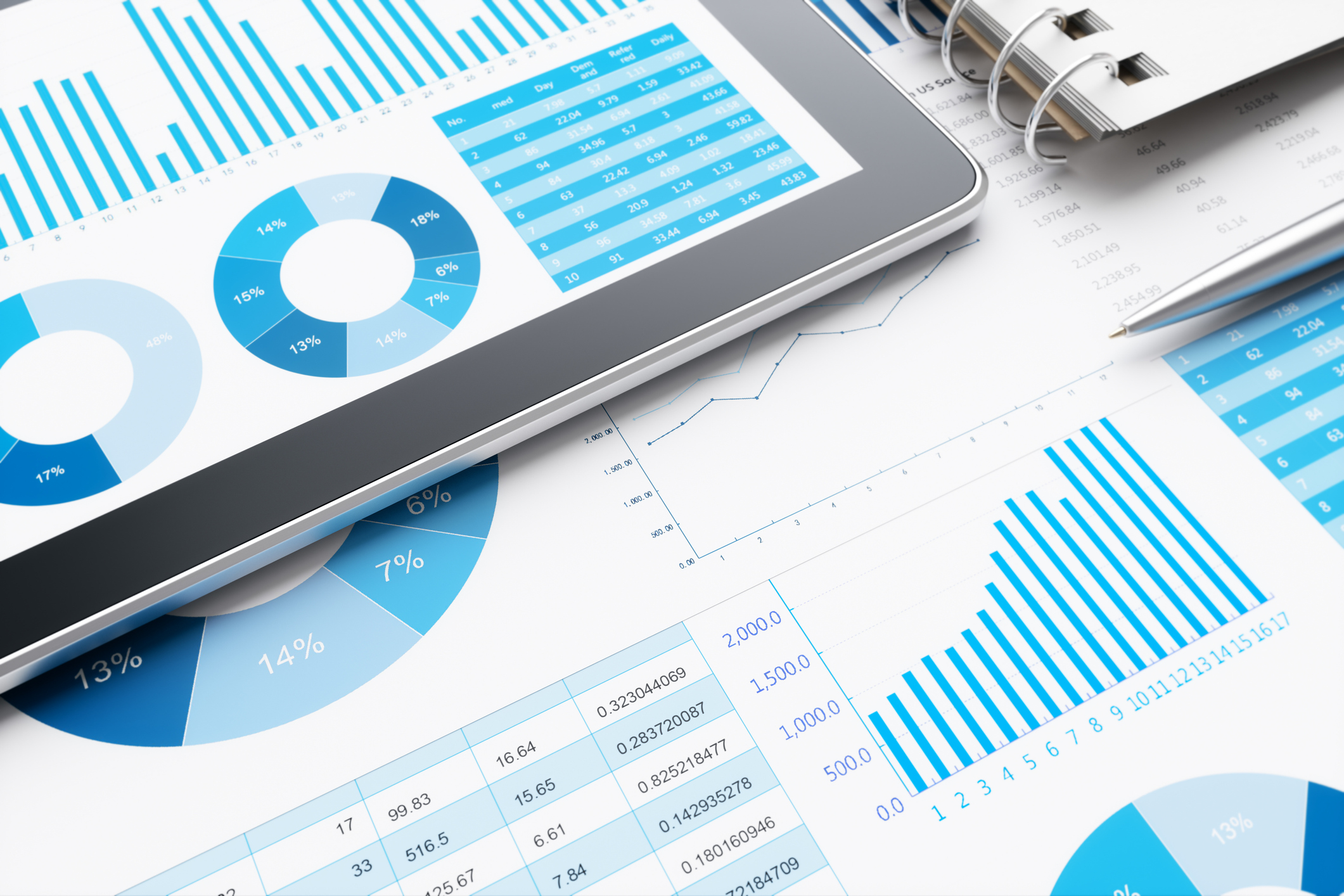
Turn Your Marketing Up or Down, Not On or Off
A common misconception among the leadership in many real estate organizations is that marketing is something you turn on or off depending on occupancy or market conditions. But that is not a strategy that will set you up for long-term success. You need to maintain a steady marketing presence to continue to attract and retain renters. Here’s why it’s important to turn marketing up or down, not off or on.
Why You Should Never Turn Your Marketing “Off”
In business, there are times when expenses outpace revenue, often when markets are oversaturated or the economy is in a downturn. How do you compensate? By cutting expenses where you can, usually your soft costs, like marketing. It sounds simple – turn off your Facebook ads, slash your budget for search, stop paying for listings management. No big deal, right?
Not so much. Without marketing, you don’t have sales. Without sales, you don’t have revenue. And without revenue, you don’t have a business. Instead of turning marketing off, you should be exploring opportunities to make it more efficient.
According to an article by Craig Bloem posted to Inc.com, there have been several studies that show companies who increase spending during a recession actually enjoy larger gains in market share than those who cut their marketing investment.
How to Make Marketing More Efficient
Marketing efficiency is always a topic of discussion for commercial real estate owners and operators. You want to acquire new customers and you want to do so efficiently. To do so however, you need to invest in new technologies that automate once-manual processes and attract the right prospects with the right message at the right time.
This is where digital marketing comes in. The movement from connected-multichannel integration to omnichannel personalization has begun, and those who do not adopt now will be left to fight over existing leads. To effectively attract new customers, you need to self educate on the buyer’s journey.
It is not a linear process – buyers consult more than 20 digital touchpoints before making a purchase decision. Mapping the buyer’s journey is research intensive and requires the assistance of advanced marketing technologies to correctly identify sources of attribution.

Marketing Attribution Models
Before implementing any new technologies it is important to understand what marketing attribution is and which models are available to you. According to Google, an attribution model is “the rule, or set of rules, that determines how credit for sales and conversions is assigned to touchpoints in conversion paths.” Which model you select impacts the valuation of your different marketing channels.
Here is an overview of the four most commonly used attribution models:
First Interaction Attribution
As the name would imply, first interaction attribution gives credit to the first touchpoint in the buyer’s journey. This model is most useful for businesses with a short sales cycle who want to identify how customers initially come into contact with their brand.
Last Interaction Attribution
Often referred to as last-click or last-touch attribution, this model assigns full credit for a conversion to the last touchpoint in the buyer’s journey. It is the default attribution model in Google Analytics as it is considered the most effective for determining which channels are most effective at converting leads.
Linear Attribution
Unlike first or last click attribution models, linear attribution evenly distributes credit to each touchpoint a customer engaged with before converting. Although easy and straightforward to understand, this model lacks the nuance of time decay attribution.
Time Decay Attribution
Time decay attribution is similar to linear attribution in that is also gives credit to each touchpoint in the customer journey, although not equally. Instead, it takes into consideration when an interaction occurred and gives more weight to the interaction that happened closest to conversion.
Technologies that Improve Marketing Efficiency
Once you have established an attribution model, you can focus your efforts on the channels that are most effective at generating new leases. This is where marketing technologies powered by automation, artificial intelligence, and machine learning come in.
An automated system does what we tell it to do. It follows a specific set of instructions for a specific set of tasks that were previously performed by humans. AI meanwhile decides which approach to take based on various conditions. It does this automatically. But, unlike automation, we don’t need to direct every action with a specific instruction. It can determine the best action based on what information is available. A system that uses machine learning is similar, but it keeps getting smarter. It makes decisions based on the information that is available to it. Plus, it remembers what action was taken and interprets the result so that it can make related decisions in the future.

Why You Need Automation, AI & Machine Learning
As budgets tighten, these are the technologies marketers need to get serious about. Why are they so important? There are two main reasons. First, they reduce human errors. Manual systems and processes that require analysts to pour over data, make decisions, and build new strategies will quickly be a thing of the past. Secondly, if you’re not considering the use of AI and machine learning in your current marketing, you won’t be able to achieve the efficiencies and margin expansion you need in the future. The next generation of efficiency will come from smart systems that use these technologies.
Smart Technologies You Can Integrate Into Your Marketing Stack
At G5, we have developed and implemented various technologies to make marketing more efficient for our customers. Automating processes allows us to reduce human errors and speed things up. By adding machine-learning and AI into our marketing capabilities, we begin to take gigantic steps ahead of where most digital marketing companies are today.
Google Responsive Display Ads
Google Responsive Display Ads leverages machine-learning to test multiple combinations of images and ad copy in order to build the best-performing ads. The system builds and tests several combinations of different headlines, images, descriptions, and logos. It optimizes campaigns to display the best-performing combinations to an audience.
Lead Insights by G5
Lead Insights provides the data to power AI-enabled features. Beyond knowing how many people click on an ad, this technology tells us which campaigns and keywords are actually driving the highest conversions. G5 can use this rich data to improve campaign performance based on the keywords and ad groups that deliver the best results for a property.
Google Smart Bidding
Google Smart Bidding uses machine learning to optimize for conversions in every auction. Smart Bidding automatically adjusts keyword bids according to rich user signals (i.e.device type, location, time of day, search query). When partnered with Lead Insights, G5 can drive further digital advertising efficiency by leveraging the power of Smart Bidding to process more user signals, automate procedures, and make changes to bids in real-time.
Pulse Sentiment Analysis – G5 Reputation and Social Management
This AI-driven technology reads and understands every individual online review for your property, helping to keep a pulse on what your customers are saying about your property online. G5 Reputation and Social Management gives you a clear breakdown of customer sentiment from reviews across online sources, along with the topics that are driving the highest and lowest sentiment at each of your properties. Leveraging AI to tackle the time-consuming task of reading reviews gives you time back in your day so you can focus on programs to increase loyalty and revenue.
The Future of Marketing
As marketers, we now have the computing power to let machines do the more mundane and otherwise time-consuming tasks for us. This frees up time and budget to focus on the strategic initiatives that are driving the future of our companies.
For more information on how to improve the efficiency of your marketing efforts, schedule a demo with G5 today.
Get News, Articles & Updates in Your Inbox
Thank You for Your Interest
We will be in contact soon and look forward to learning more about you and your company. Based on your marketing challenges, we’ll discuss increasing visibility into your analytics and how to generate more and better leads so you can achieve your marketing goals.
In the meantime, we invite you to check out our checklist on website accessibility. Use this checklist to start assessing the baseline accessibility of your website.
Enjoy! We’ll be in touch very soon.
